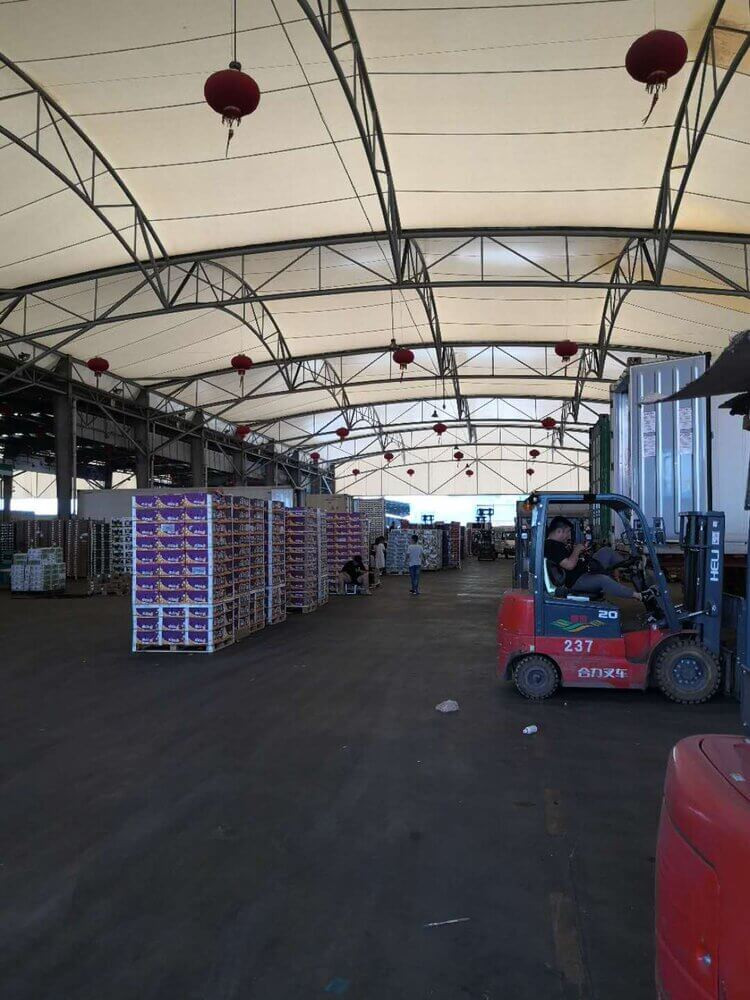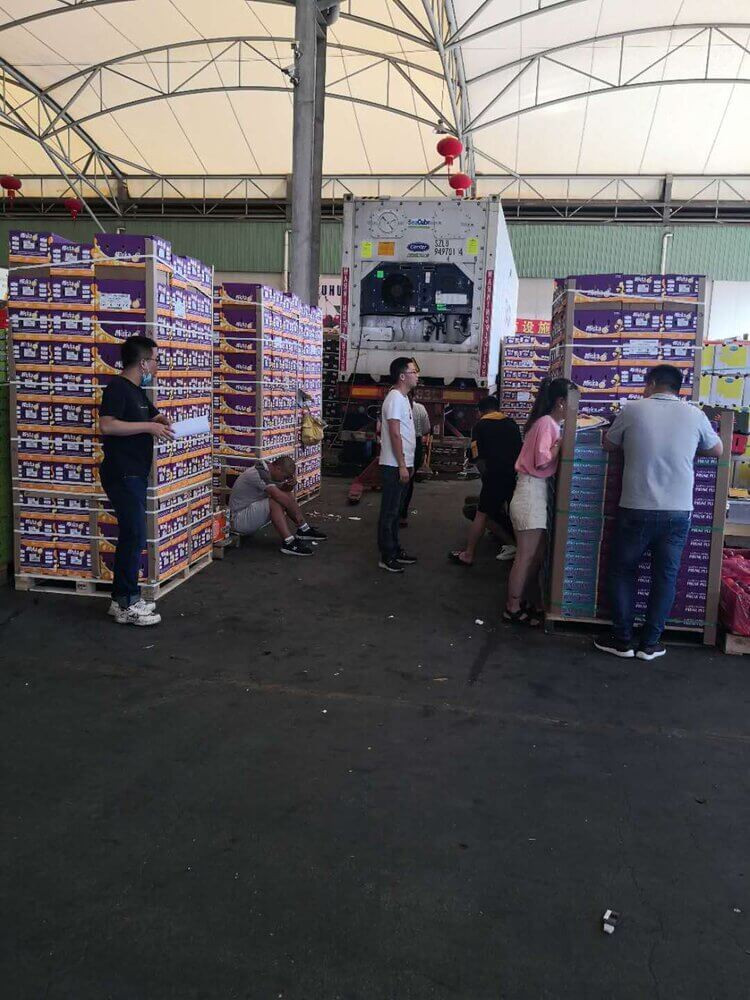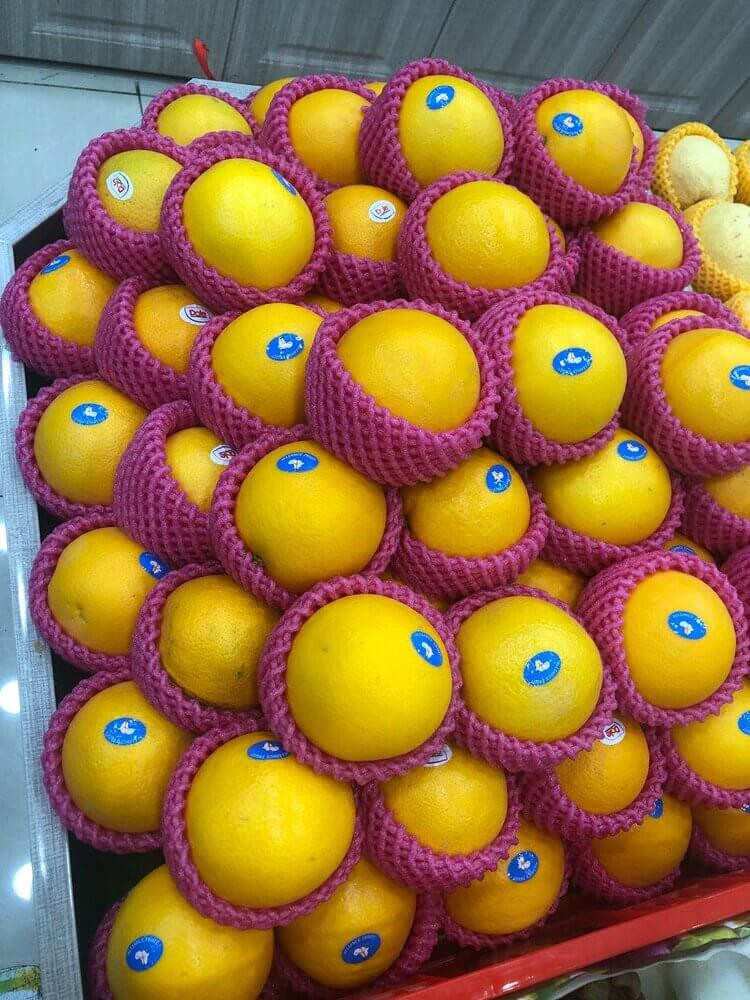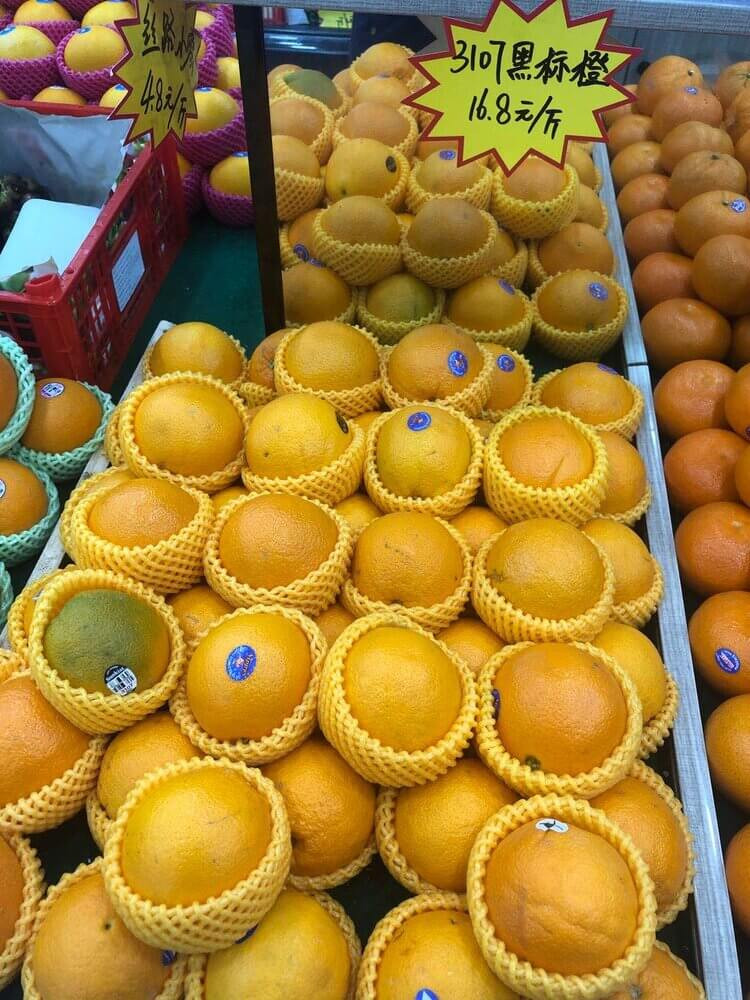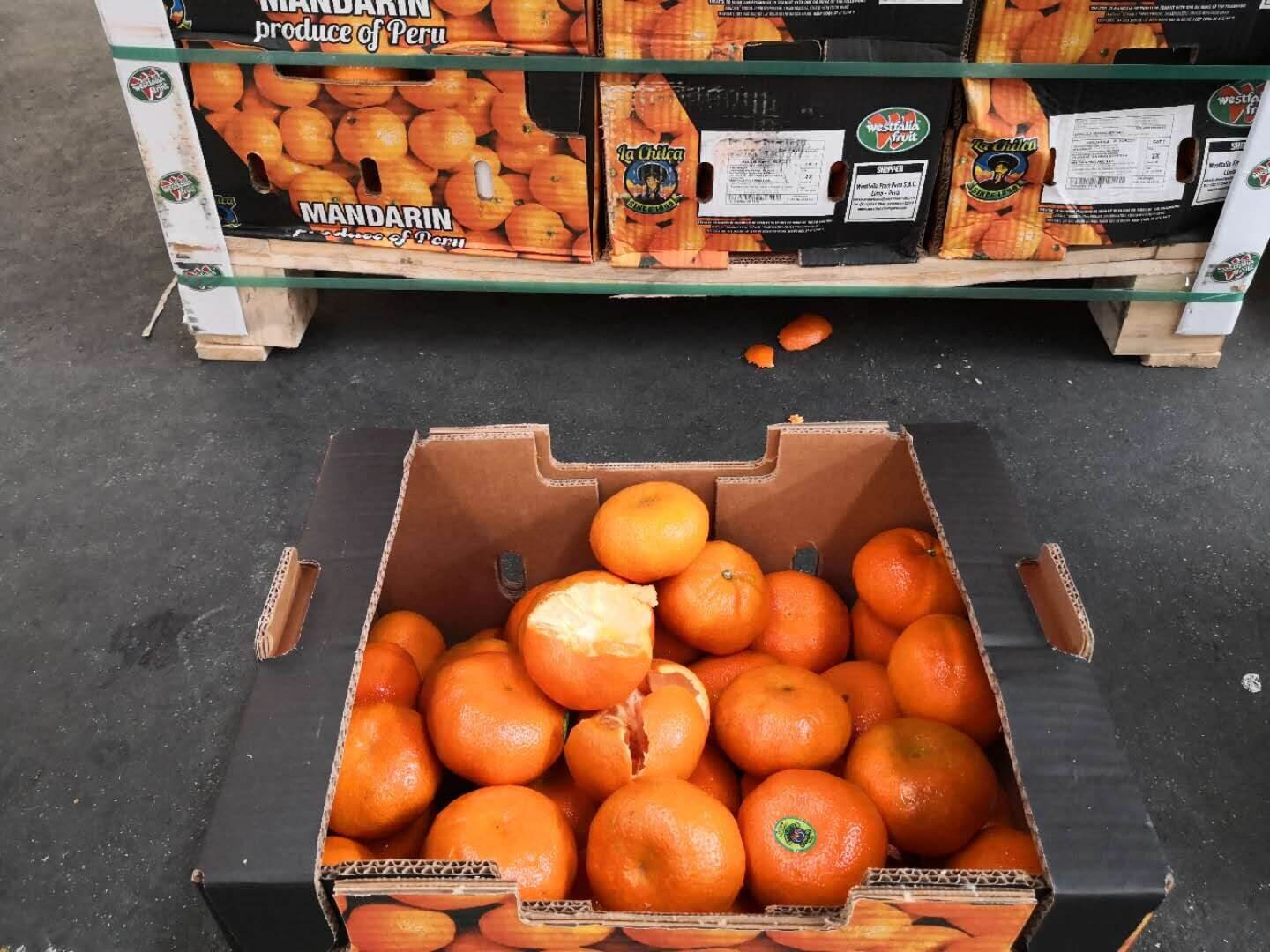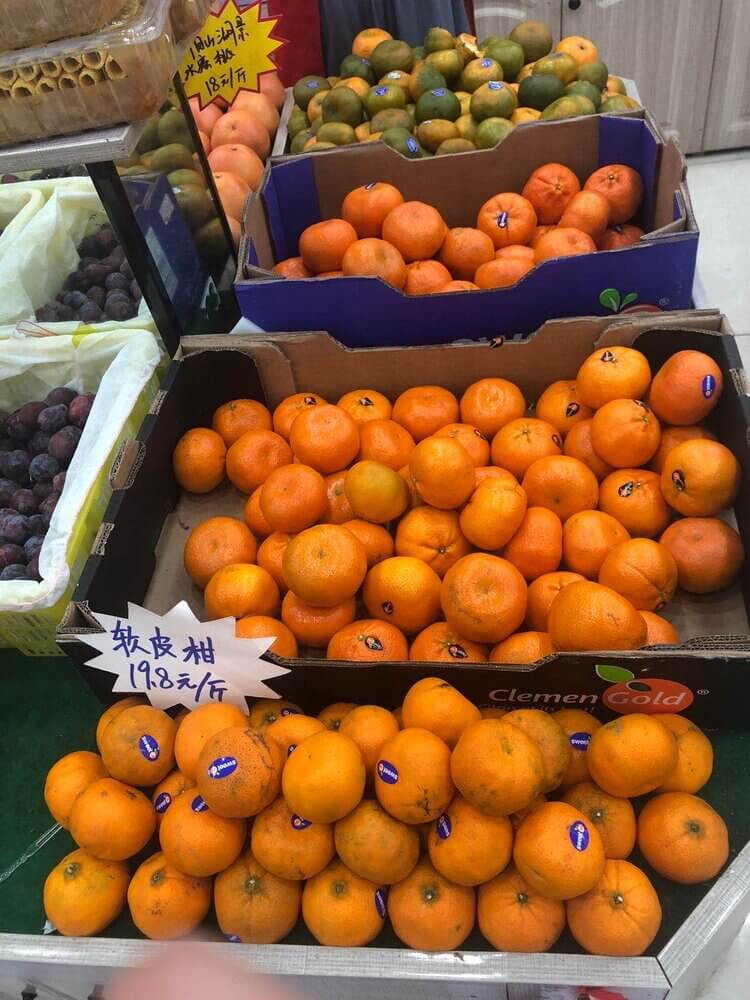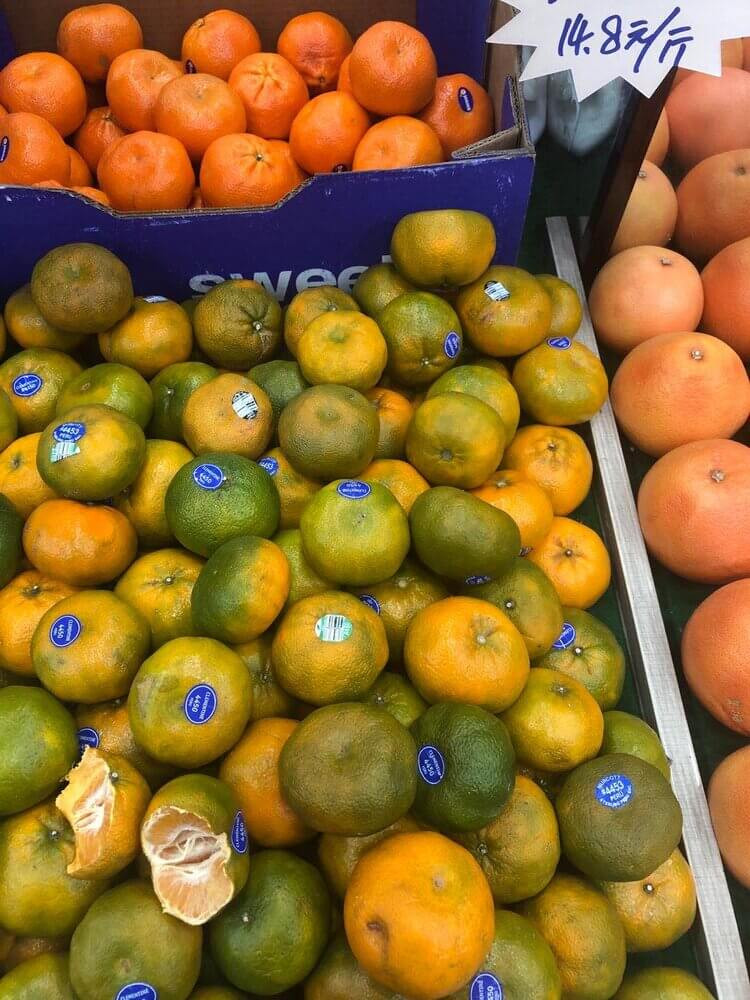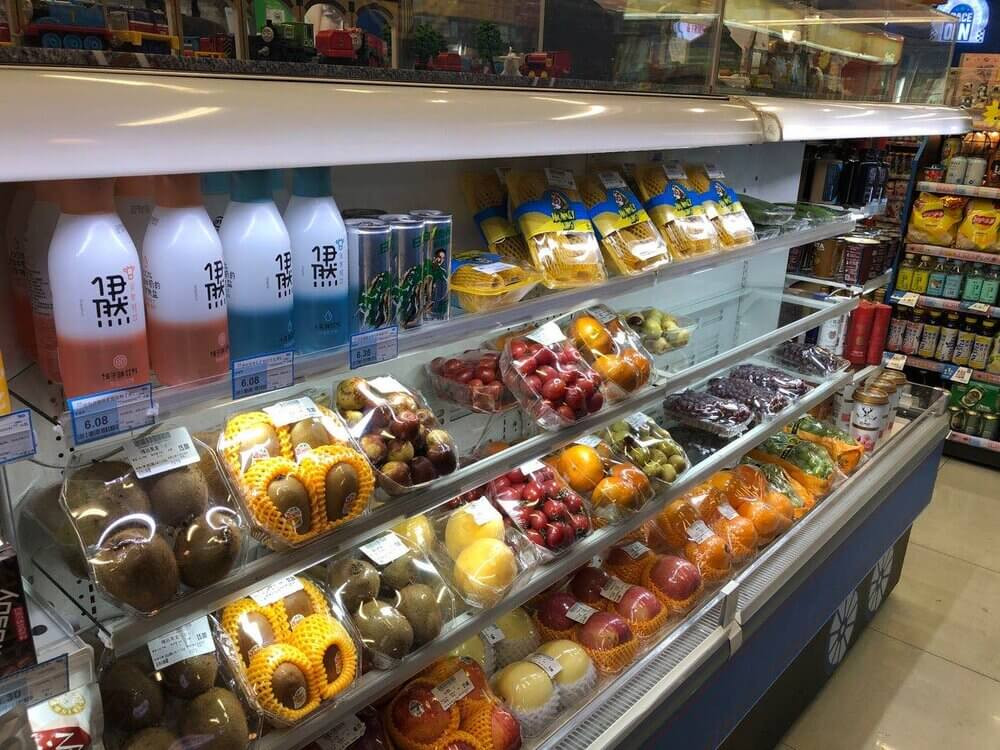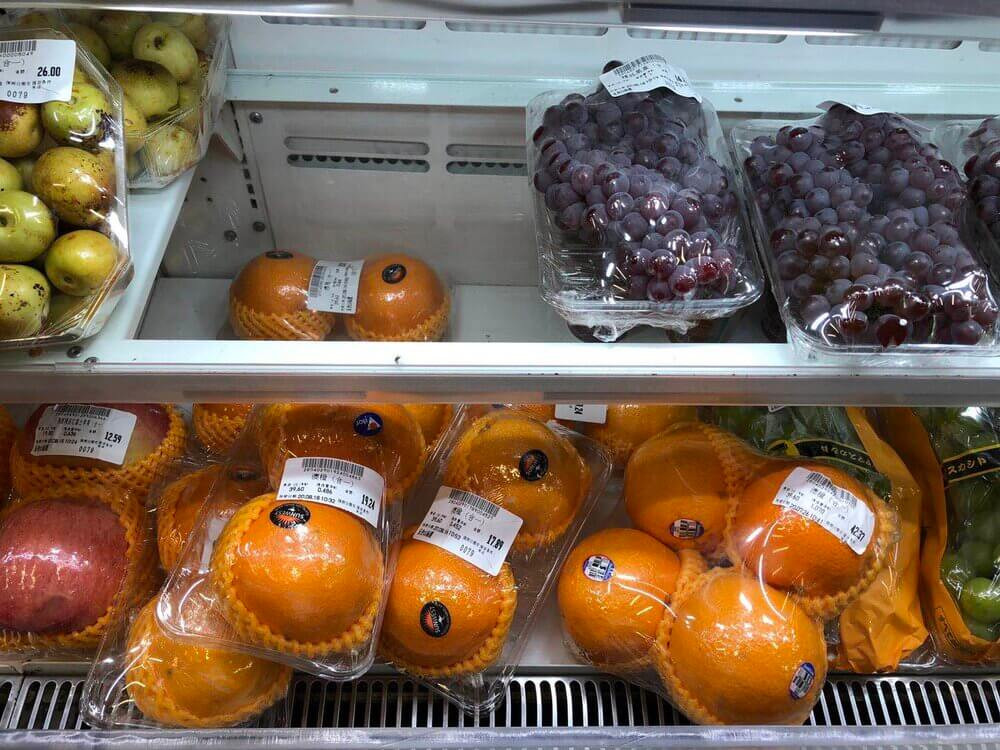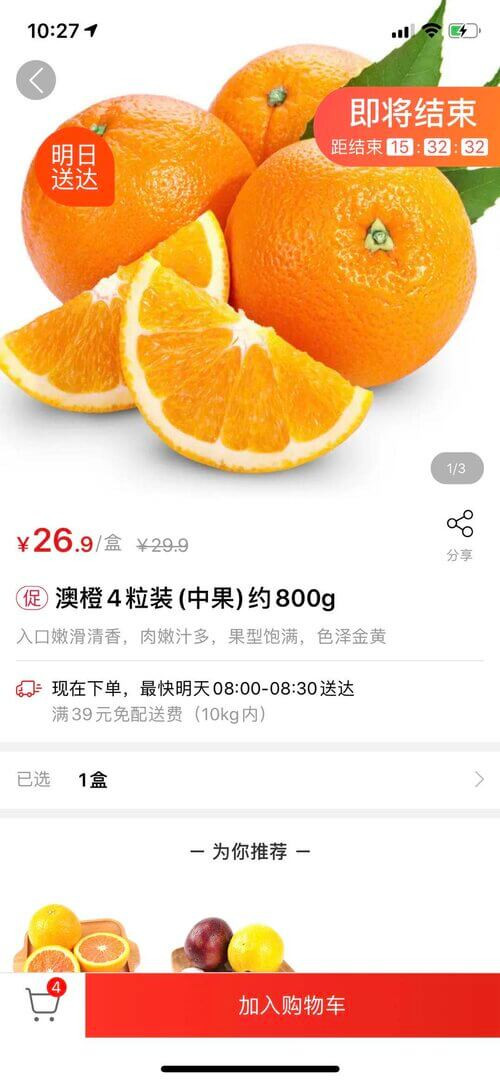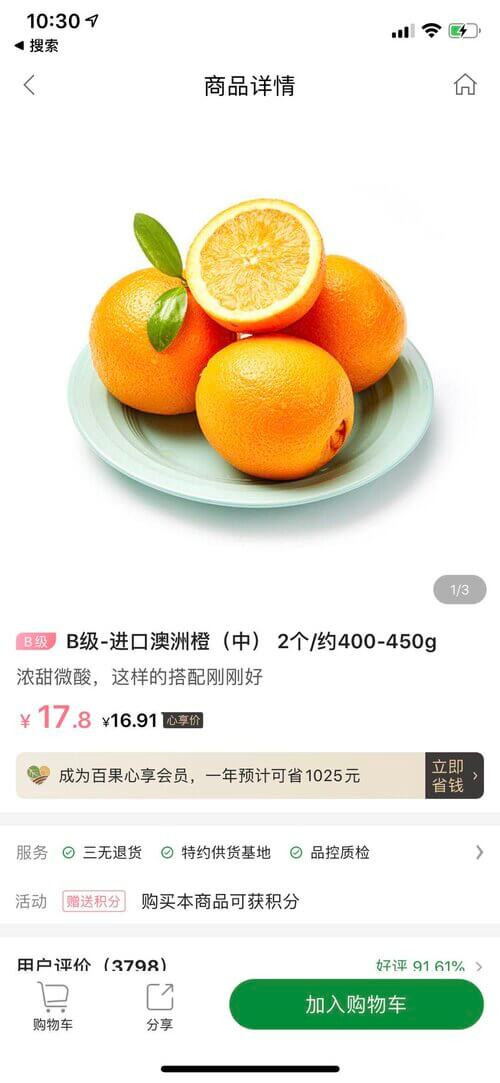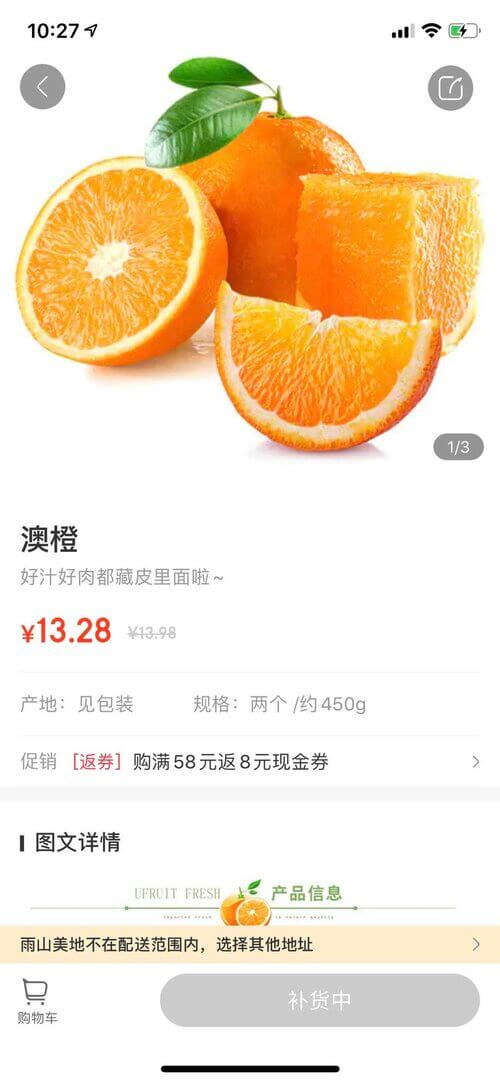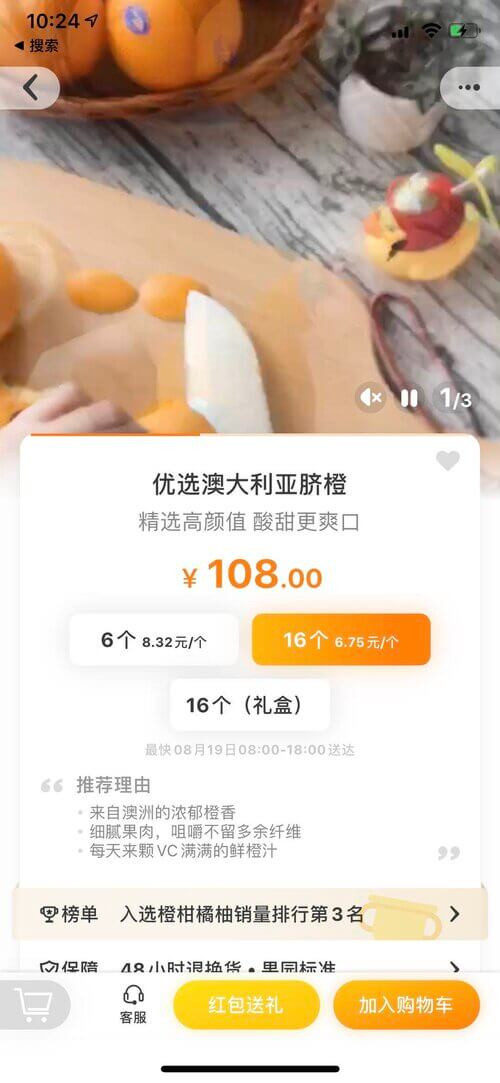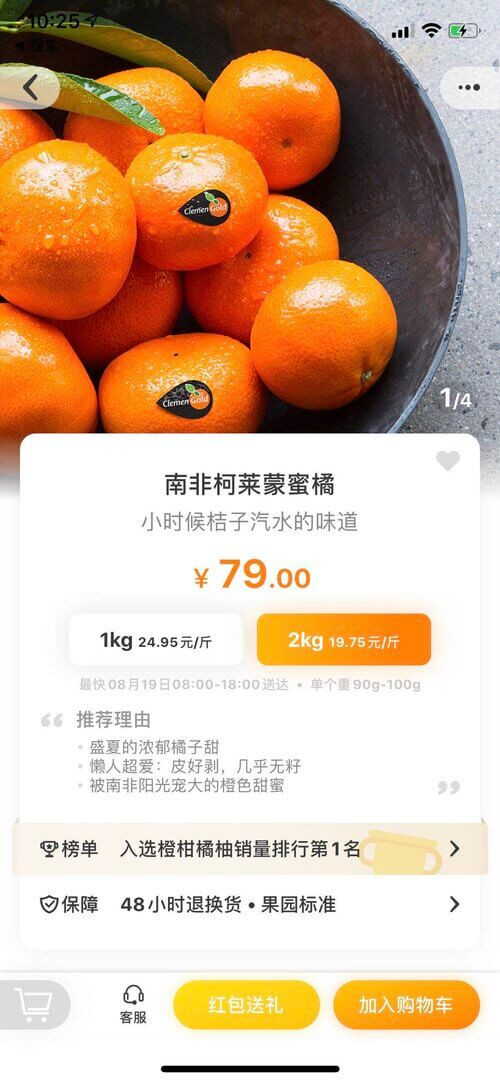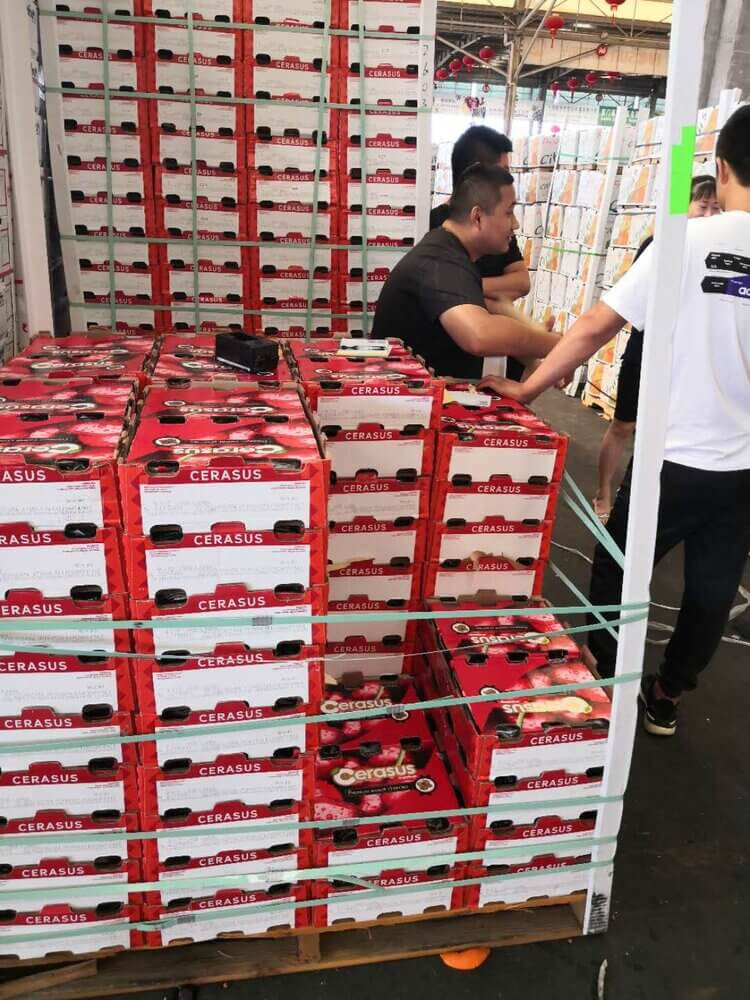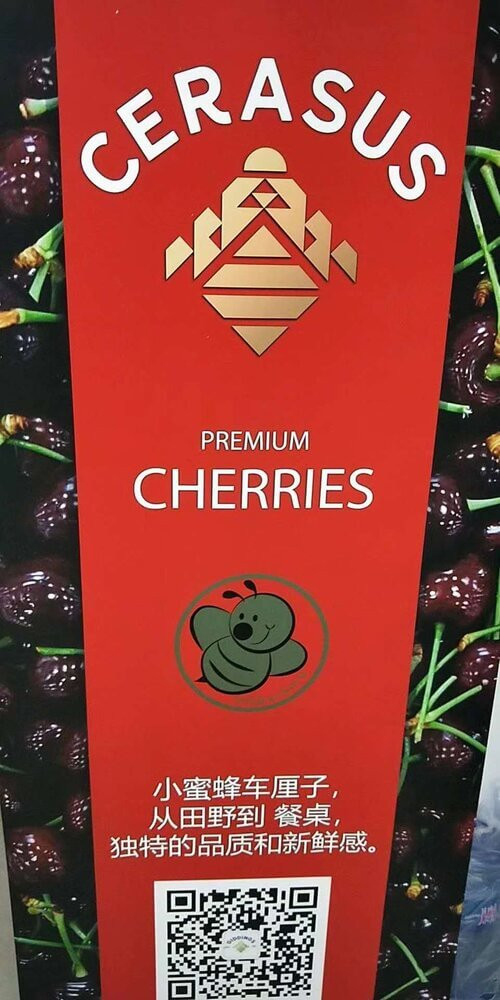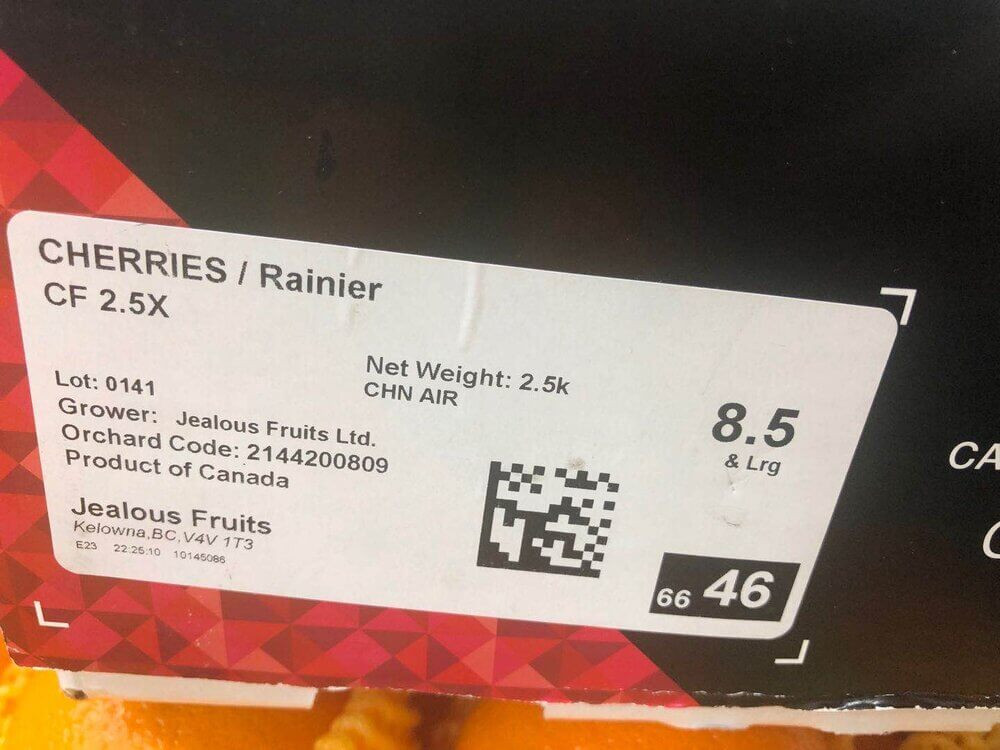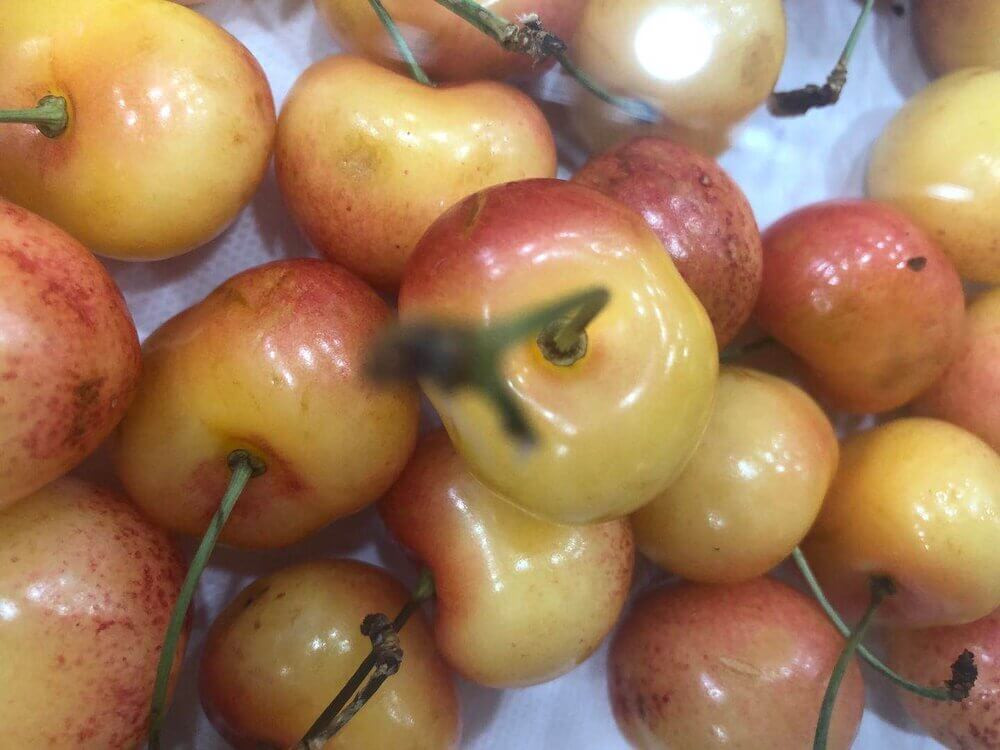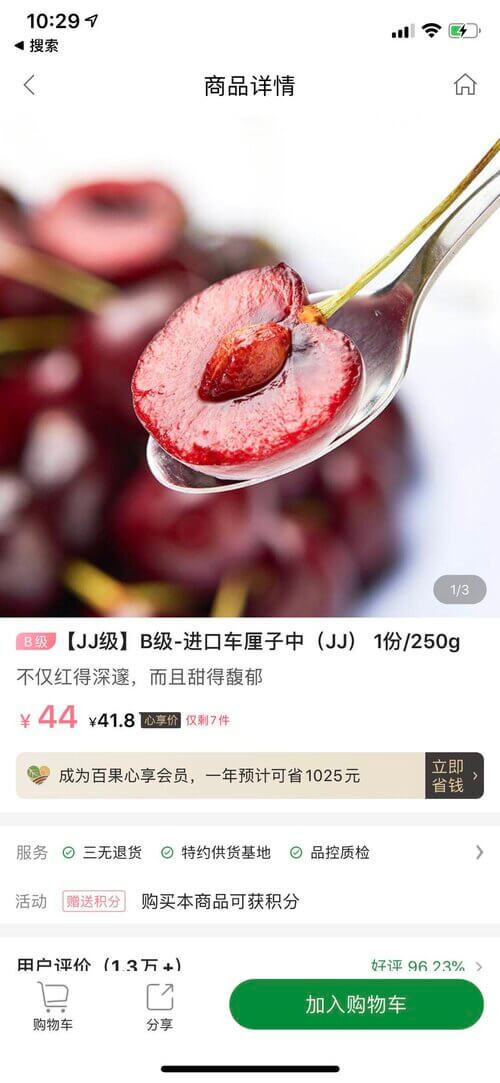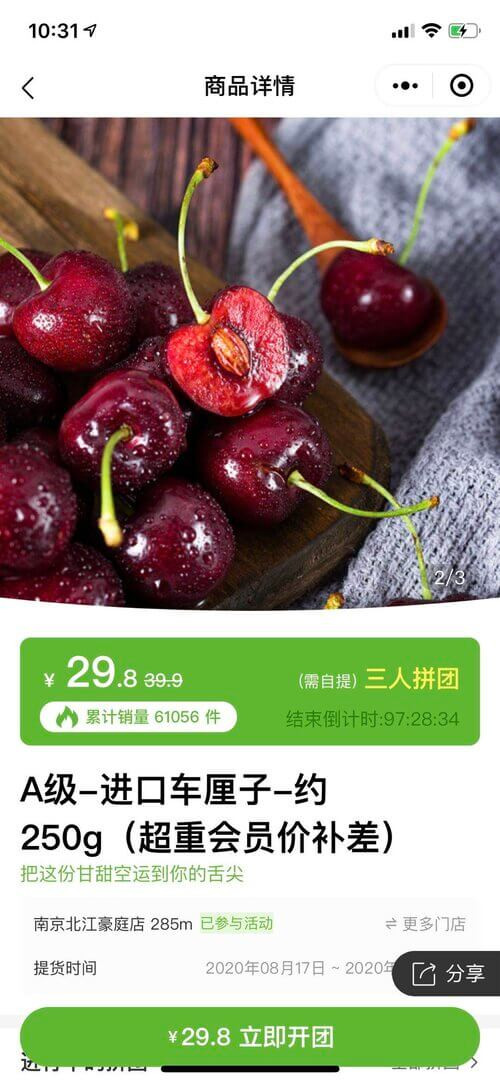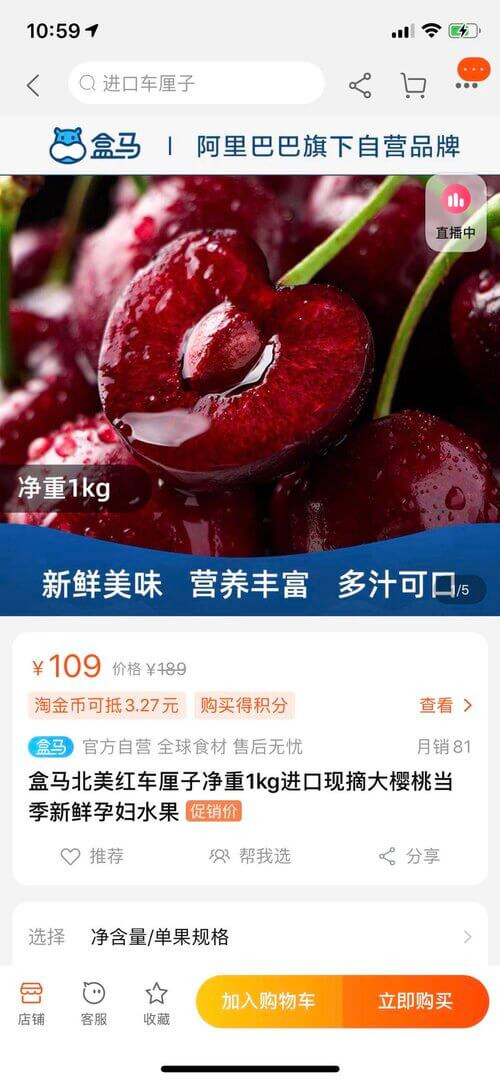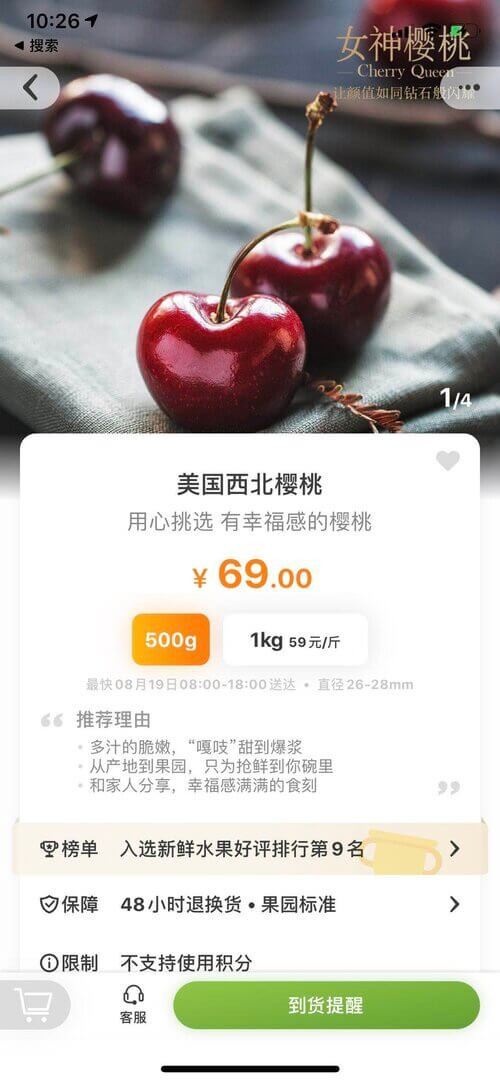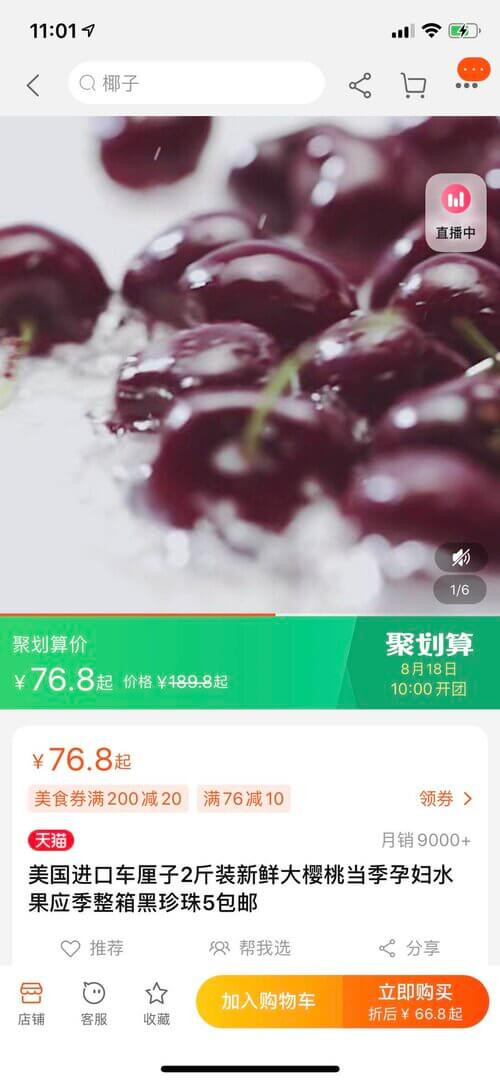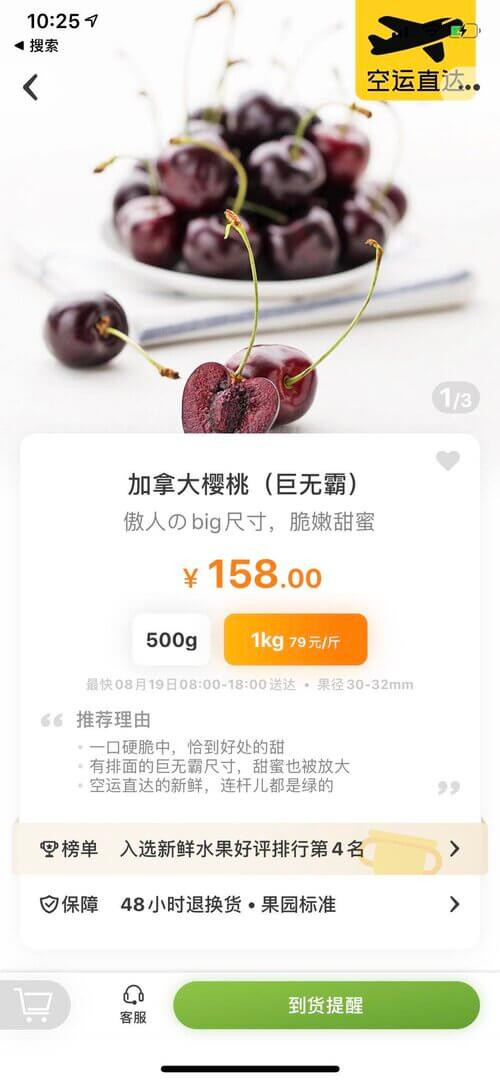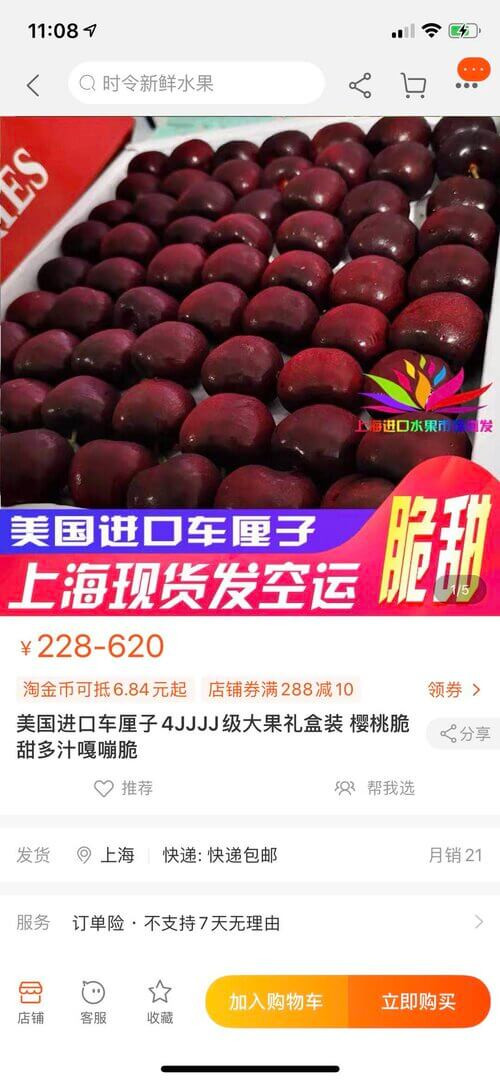Shanghai Market Snapshot mid-August 2020 - Citrus and Cherries
28 August 2020
Now Covid-19 has largely been controlled in China with most business back to 70%-80% of normal levels. However, the summer period is always a light season for imported fruit as the market is dominated by domestic fruit such as stonefruit and melons. This summer has also had heavy rain most of the time and it has become very hot over the past two weeks with temperatures of about 35-38 degrees around Shanghai and East China.
The business in Shanghai market is very slow at the moment in such hot weather. Huizhan Wholesale Market market operates until 10am but business becomes very light after 8am. The market will likely pick up from now into September, especially when it is close to the Mid-Autumn festival (1 October) and national holidays (1-8 October).
Among all items, citrus is now one of the few items in the market with reasonable volume. Citrus is an in-demand and complementary category in the Chinese summer and the category has been helped this year by the category’s perceived health benefits and high vitamin C content as a perceived immune booster.
Huizhan Market very quiet on 16 August 2020.
Citrus
Now the citrus in the markets are mainly from Australia, South Africa, and Peru. There were a few arrivals of Chilean mandarins some time ago and the sales were not very good. Chile keeps sending lemons to China quite competitively (Wholesaling at RMB230-240 (AUD $46-48) per 18kg)(Exch Rate: Aud 1.0 = RMB4.95). One importer said some Chilean oranges have been sent to Guangzhou but they have not seen them in Shanghai.
South Africa (SA) has sent a little less fruit to China compared to previous years (Navels 30% down and Valencias about the same as last year) which means there isn’t a large volume of citrus from SA in the market this year. In the last two weeks volumes had risen. One importer said that exporters in South Africa couldn’t supply enough volume of citrus and SA consequently SA citrus prices are higher than previous years. The mid August current wholesale price of SA oranges was around RMB8-10 (AUD$1.60-AUD$2.00) per 500g. Australian orange wholesale price is around RMB10-12 (AUD$ 2.00-2.45) per 500g. (Update 28 August - as volumes from SA and Australia have risen over the past week, the market has moved towards slight oversupply and prices have dropped).
Picture Above: SA oranges (left) RMB11.8 per 500g and Australian oranges (right) RMB16.8 per 500g in a Nanjing fruit shop.
In the retail sector, a fruit shop owner in Nanjing said their Australian oranges are better quality and are more competitively priced compared to South Africa this year because the South African cost price has risen. He currently retails Australian oranges at RMB16.8 (AUD$3.40) per 500g and SA at RMB11.8 (AUD$2.40) per 500g. Some consumers are willing to pay the extra cost for Australian oranges as the price difference isn’t huge and quality of Australian oranges is better. They say the South African oranges have a lighter colour and less taste.
SA is also sending more Nadorcott (Afourer) Mandarins this season. They have been quite well accepted and sweet according to importers. Wholesale price is around RMB15 per 500g. Retail price is around RMB22 per 500g.
Australia sent low volumes of citrus early in the season which helped to maintain high prices in that period. When the volume of Australian oranges goes up, the price goes down. One importer said the Australian orange wholesale price fluctuates from RMB400+ when volume is low to RMB300+ when the arrival volume is larger. Overall returns have been satisfactory this season. In some seasons when the volume is large and the quality is average they make losses. Importers feel that current price decreases of Australian oranges are not caused by South African competition but just a function of increased Australian arrivals.
Australian Honey Murcott and Royal Honey Murcott are well received by Shanghai market with good taste and quality. Total arrival volume have not been large and prices are not influenced by SA mandarins. 2PH is most liked by the market for consistent quality, good taste. As Australian mandarin volume has been low, the sales price has been quite high (Update 28 August - as we have seen increased arrivals of Australian Murcotts in the past few days prices have dropped). Importers say plantings are expanding of South African mandarins - if volumes grow sufficiently this may effect Australian mandarin prices in the future.
SA Nadorcott (Afourer) seems to be growing in popularity. Buyers suggest the fruit is sweet which probably means they are sending low acid fruit. The Nadorcott brand, Clemen Gold stipulates in marketing material that “only naturally mature fruit, even color, brix above 12 with good sweet acid matching can be packed in Clemen Gold box”. www.berdafruit.com/h-nd-1467.html. Wholesale price is around RMB15 per 500g. Retail price is around RMB22 per 500g.
Peru is sending significant quantities of mandarins to China. Current variety is W Murcott. According to marketing material of Peruvian W Murcott it is a “good late season variety with few seeds and easy peel. Tender, juicy and sweet”.
Picture above: Peruvian Wholesale Price W-murcott RMB200 per box of 10kg.
Regarding Packaging - some South African Clemen Gold Brand uses an open-top box. The importers tell us they prefer the traditional closed box as open-top boxes can collapse on the pallet and be damaged lower in the stack, which can lead to large losses. Unless the fruit is exceptionally nice with no blemishes and the packaging quality is strong, open-top boxes are not suggested. Some end customers also want to keep getting the closed box they are used to. The wholesale price is determined by demand and the quality/taste of fruit. When the fruit is damaged obviously the price drops significantly.
Citrus still relies largely on wholesale channels in China. Supermarkets, e-commerce and Wechat traders always have a high expectation about quality but can’t always pay the high prices required for premium imported fruit which means the volume imported directly by these channels is limited. E-commerce and Wechat traders move some high-priced fruit but also relatively low volumes.
The majority of premium fruit going through wholesale channel from what we see ends up at various fruit shops - either a boutique shop or a larger local fruit shop. The local shop owners are often fruit experts who have built relationships with numerous customers in their local area including corporate buyers and more affluent urban consumers. The fruit shop owners often operate a Wechat group where they can post information about new fruit arrivals and deliver upon request, with quality guaranteed.
Larger local fruit shops believe they offer more varieties of premium fruit than the retail fruit chains (eg. Pagoda). These local fruit shops tend to move moderate but consistent volumes every day so they buy as they need and keep fruit fresh. They might sell one or two boxes of each premium fruit item per day, for example one box of Dinosaur Egg Plums, one box of US cherries, one box of Canadian cherries, one box of Australian mandarins and two boxes of SA mandarins so that customers have plenty of choice. Generally, retail fruit chain stores are 20-30% more expensive than local fruit shops and to attract business they regularly run promotions.
Compared to cherries, citrus has wider distribution in almost all channels - fruit shops, supermarkets and e-commerce platforms.
Retail Survey - Citrus
Below is a small snapshot of images from fruit stores and supermarkets in Nanjing in the week beginning 17 August and retail on-line marketing.
Picture above: Fruit shop in Nanjing. From top to bottom: Box 1. Peruvian mandarins RMB14.8 for 500g, Box 2 &3 SA mandarins RMB22 for 500g, including Clemen Gold Nadorcott, Box four SA mandarins RMB19.8 for 500g. Right hand Picture: Peruvian W Murcott
Picture Above: CRC Supermarket Nanjing Fruit Section. Australian Oranges RMB39.6/kg
Pic 1: RT Mart S’Mkt Aust Oranges RMB26.9/4 pcs Pic 2: Pagoda Store Aust Oranges RMB 26.9 Pic 3: Yonghui supermarket: RMB13.28 for 2 pcs
On-line Promotions Citrus
Here are two examples of citrus offers on prominent e-commerce site Fruitday.com
Pictures: Fruitday RMB108 for 16 pcs Au oranges Fruitday SA Clemen Gold RMB79 for 2kg.
Cherries
Generally, the quality of USA cherries this year has been mixed with quality better and more consistent from the larger US packing houses. Canadian cherries have had reasonable quality this year and the colour is slightly redder (not as dark) as USA cherries. One importer said the specific variety of cherries was the most important determinant of quality with Canadian and US cherries having similar quality for the same variety. Premium cherry sales are still good. Middle to lower quality cherries are mainly sold on consignment.
US cherry costs are reasonably high due to the extra tariff imposed on some products due to the USA-China trade dispute – Currently USA Cherries have a 25% import tariff and Canada 10% with VAT 9% for both. Canada has a competitive advantage from the lower tariffs. Currently, both US and Canada have strong demand with prices increasing. As the arrival volume is low, sales in wholesale markets are reasonably consistent and fast. Chinese importers say they are working on low profit margins at present as cost of cherries is high. The approximate cost of USA cherries at the moment is approx. CIF USD48/5Kg and Canadian cherries at USD55-60 or more. For USA cherries adding import tax, VAT, freight and document fee, brings total costs to approximately RMB 550 for 9 row /9.5 rows. According to one importer sea freight rates from USA have increased significantly this year with costs of a 40’ Reefer rising from USD $3000 plus to USD $5000 plus. Air freight maybe add RMB 50/5kg to the end cost price of USA cherries, over sea freight. However, we have seen current Canadian cherry quotes that offer the same cost price for Canada by sea and air.
US cherries used some freight charter flights early in the season and are currently mainly sea-freighting in 40’ containers, especially Skeena variety. Because of rain Skeena has more splits in both air and sea shipments, which caused some losses. Canada does not use charters and they use regular air shipments and also 40’ containers. Interestingly some importers said some of the US sea freighted cherries were better quality than air freight as sounder fruit had been shipped by sea.
Cherries at this time are also mainly distributed through wholesale markets. As there is less production this year with sizes are bigger than normal years (8.5 Row and 9 Row), the price is higher than previous years. Wholesale markets still distribute most cherries to other sales outlets. Importers believe most supermarkets, fruit shop chains and e-commerce are not in a position to import directly, because they cannot move sufficient volumes in this period, without significant sales promotions.
Pic: Huizhan Market: US Cerasus Skeena cherries Wholesale Price RMB520 for 5kg 10R
From our survey the US/Canadian cherries were not available in some major supermarkets such as RT Mart and Yonghui Superstore. They are available in the retail fruit chains such as Pagoda and Xianfeng and in some larger local fruit shops. They are also quite widely available in some e commerce sites.
Picture Above: Nanjing fruit Store Canadian Rainier RMB168 for 500g. Firm, juicy and sweet.
Retail Promotions Imported North American Cherries : Pic 1 Pagoda: RMB44 for 250g Pic 2: Xianfeng Fruit Store RMB29.8 for 250g Pic 3: Hema Fresh RMB109 for 1kg US cherries
On-Line North American Cherry Promotions: Pic 1; Fruitday: USA cherries RMB69 for 500g. Pic 2: TMALL US cherries RMB76.8 for 500g 9.5R. Pic 3: Fruitday: Canadian cherries RMB158 per kg. Pic 4: TAOBAO US cherries RMB248 for 1kg 4J and RMB620 for 2.5kg
